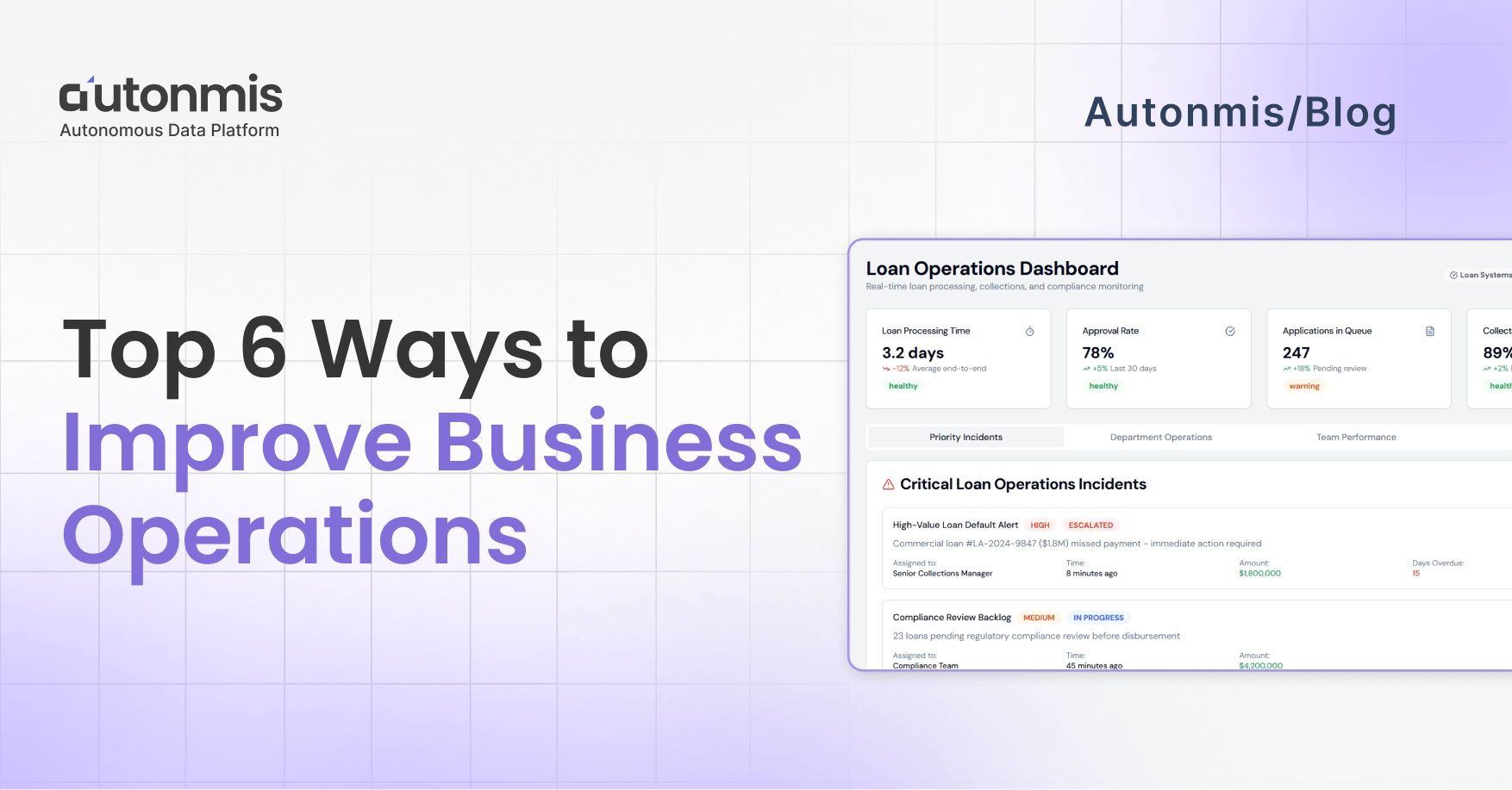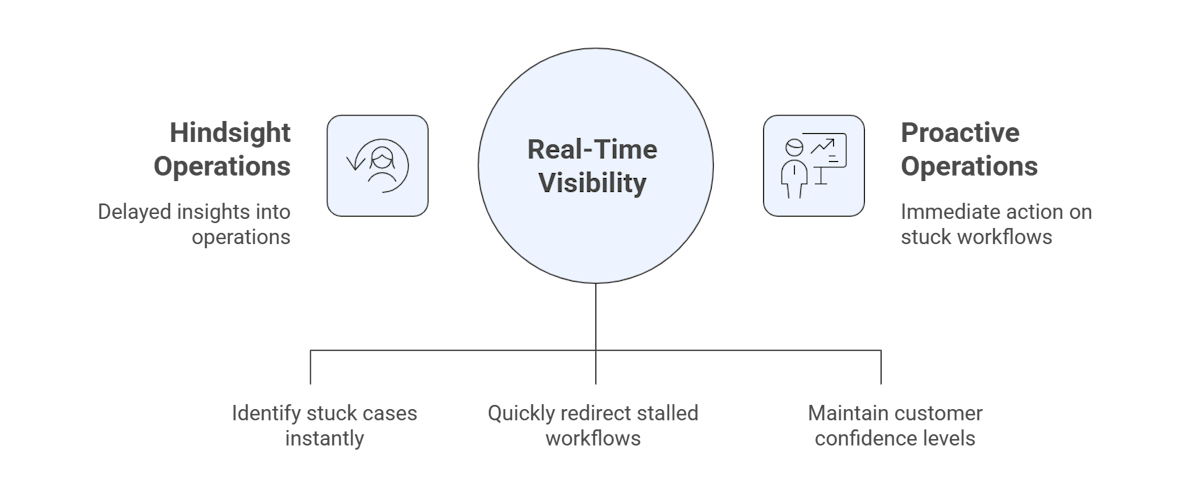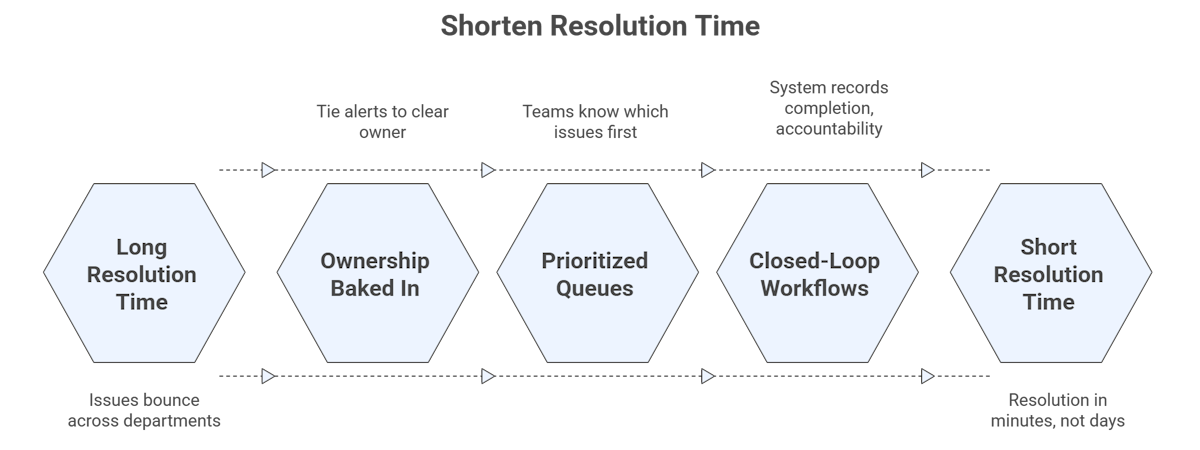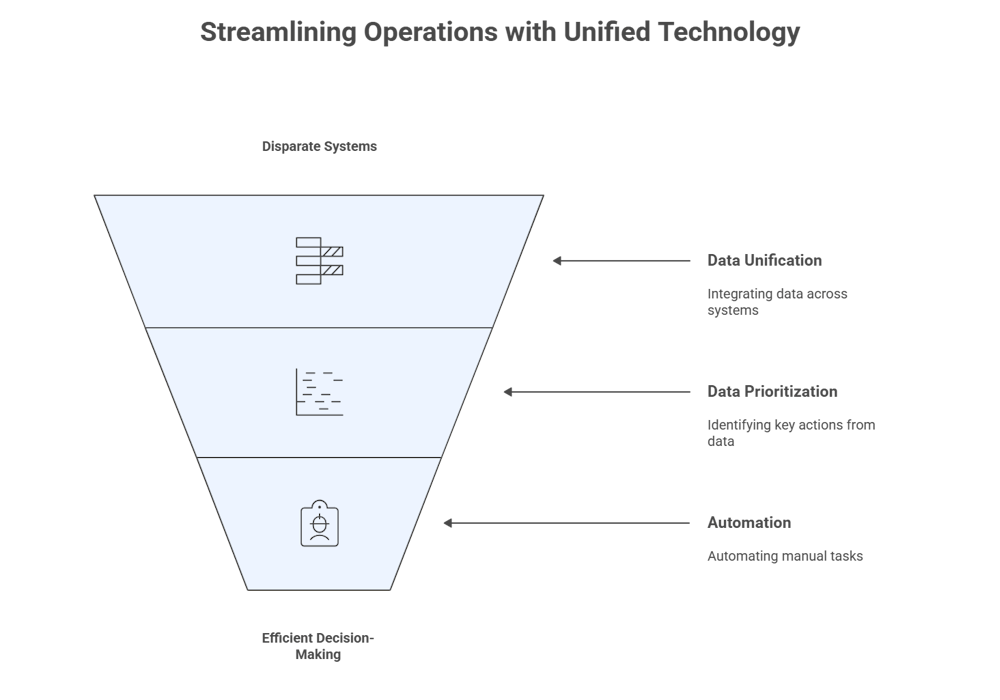Table of Contents
Loading table of contents...
Top 6 Ways to Improve Business Operations (That Actually Work)
Explore six actionable ways to improve business operations, boost team flow, and enhance customer satisfaction. Improve visibility, eliminate failures, and keep your teams in sync!
August 29, 2025

AB

Business leaders don’t need another fluffy guide on “efficiency hacks.” You’ve seen enough of those. What you actually need is clarity on how to fix what slows your teams down every day: delays, blind spots, rework, and escalations that could’ve been avoided.
Operations is the part of the business where promises meet execution. When it works, customers get what they were promised, teams stay in flow, and leadership has confidence. When it breaks, frustration piles up across every layer of the company.
Based on years of running large-scale lending and service ops and building Autonmis, an operational intelligence platform for business leaders, here are six practical, high-leverage ways to improve business operations.
These are some of the proven Ways to Improve Business Operations leaders can implement.
1. Get Real-Time Visibility Into Workflows
Most leaders only see operations in hindsight: reports at the end of the week, or dashboards that look neat but don’t tell you what’s stuck right now.
By the time you find out:
- A queue has already breached SLA.
- Customers are already escalating.
- Teams are already firefighting.
True visibility is not just data aggregation.
It’s also one of the most effective Steps to Improve Business Operations.
Example: In credit operations, a disbursement queue can silently stall because a bank rail is down. With real-time visibility, you don’t wait for complaints - you spot the stuck cases immediately, reroute them, and protect customer trust.

Checkout: How Predictive Analytics Improves Operational Efficiency
2. Surface and Eliminate Silent Failures
The most dangerous failures in ops aren’t the loud ones. They’re the invisible ones. A KYC stuck in a retry loop. An exception sitting unassigned in a queue. A compliance deadline missed because no alert was triggered.
These “silent failures” eat away at operational trust - customers wait, teams scramble, and regulators raise flags.
Improvement begins when you turn silence into signal. This directly helps Improve Business Operations by preventing escalations.
Example: In lending, retries on bureau checks can quietly age past thresholds. Without alerts, they clog the pipeline. When surfaced early, they’re cleared in hours instead of days.
3. Shorten Resolution Time, Not Just Detection Time
Most tools are great at telling you what’s broken. Few are built to help teams fix it. The result? Leaders escalate, ops teams scramble, and issues bounce across departments until someone reluctantly picks it up.
Improvement doesn’t come from seeing problems faster.
Among the effective ways to Improve Business Operations, shortening resolution time is key.
That requires:
- Ownership baked in: every alert tied to a clear owner.
- Prioritized queues: teams know which issues to clear first.
- Closed-loop workflows: once fixed, the system records completion and accountability.
Example: A high-value loan disbursement fails due to a document mismatch. Instead of waiting until EOD reporting, it should land directly in an ops queue, assigned to the right team, with customer impact prioritized. Resolution in minutes, not days.

Checkout: What is Operational Intelligence (OI)? Complete 2025 Overview
4. Standardize Where You Can, Personalize Where You Must
Every ops leader knows the balance: standardization reduces chaos, but rigidity can hurt agility.
- Standardize repeatable flows (onboarding steps, MIS reporting, compliance snapshots).
- Personalize judgment-heavy decisions (exceptions, escalations, risk overrides).
The magic is in keeping teams aligned on the basics. Documented playbooks are classic Steps to Improve Business Operations.
Example: In collections, contacting 0–30 DPD customers should follow a standardized workflow. But when a high-value borrower promises to pay, the follow-up strategy may need personalization. Documented processes + team discretion = consistency without bureaucracy.
5. Measure Outcomes, Not Just Activities
Ops teams are often overloaded with metrics. Approval rates, average handling time, utilization, calls made, but many of these optimize the wrong behavior.
Leaders need to shift from activity-based KPIs to outcome-based metrics.
- Don’t just track “calls made.” Track “promise-to-pay kept%.”
- Don’t just track “decision TAT.” Track “first-pass approval quality.”
- Don’t just track “case closures.” Track “exceptions resolved without rework.”
Outcome-led metrics align teams with business value, not just motion.
In fact, metric design is one of the overlooked strategies to Improve Business Operations.
6. Empower Teams with the Right Layer of Technology
Most ops leaders don’t suffer from a lack of tools. They suffer from too many tools that don’t talk to each other. CRM here, loan system there, spreadsheets everywhere.
Improvement doesn’t come from adding another silo. It comes from adding the right layer - one that:
- Unifies signals across systems (LOS, LMS, payments, CRM).
- Turns raw data into prioritized actions.
- Removes grunt work like manual MIS prep.
Example: Instead of pulling data from five systems to prepare a weekly risk report, a platform should auto-generate a board-ready MIS in minutes. That frees leaders to focus on decisions, not reporting.

Checkout: Alert Fatigue in Lending Ops: Fixing the Wrong Things First
The Bigger Picture
Improving operations isn’t about chasing the latest framework.
It’s about adopting the right Ways to Improve Business Operations consistently: visibility, accountability, prioritization, and outcome-led measurement.
Do these well, and the compounding effect is huge: fewer escalations, faster cycle times, teams with more bandwidth for growth, and leadership with confidence instead of surprises.
Where Autonmis Fits
At Autonmis, we’ve built exactly for this. An operational intelligence layer that sits on top of your existing systems, without heavy engineering lift and turns signals into accountable workflows.
- Real-time visibility into bottlenecks.
- Silent failures surfaced early.
- Priority queues for stuck or high-value cases.
- Automated MIS for leadership and regulators.
- Team accountability against SLAs.
Our outcomes speak for themselves: mid-sized lenders have cut disbursement stuck-case resolution times, slashed MIS prep from hours to minutes, and improved early-bucket collections focus.
Because better ops isn’t about control. It’s about clarity. And clarity is what Autonmis delivers.
Applying the right Steps to Improve Business Operations consistently is exactly why we built it.
Recommended Blogs

10/17/2025

AB
How GFF 2025 Changes the Way BFSI Will Operate in India

10/13/2025

AB
Top 5 Ways to Improve Lending Operations for Business Growth
Actionable Operational Excellence
Autonmis helps modern teams own their entire operations and data workflow — fast, simple, and cost-effective.